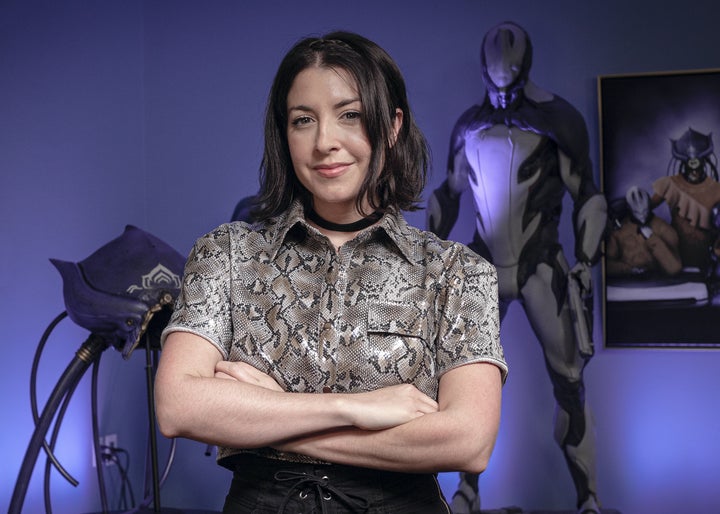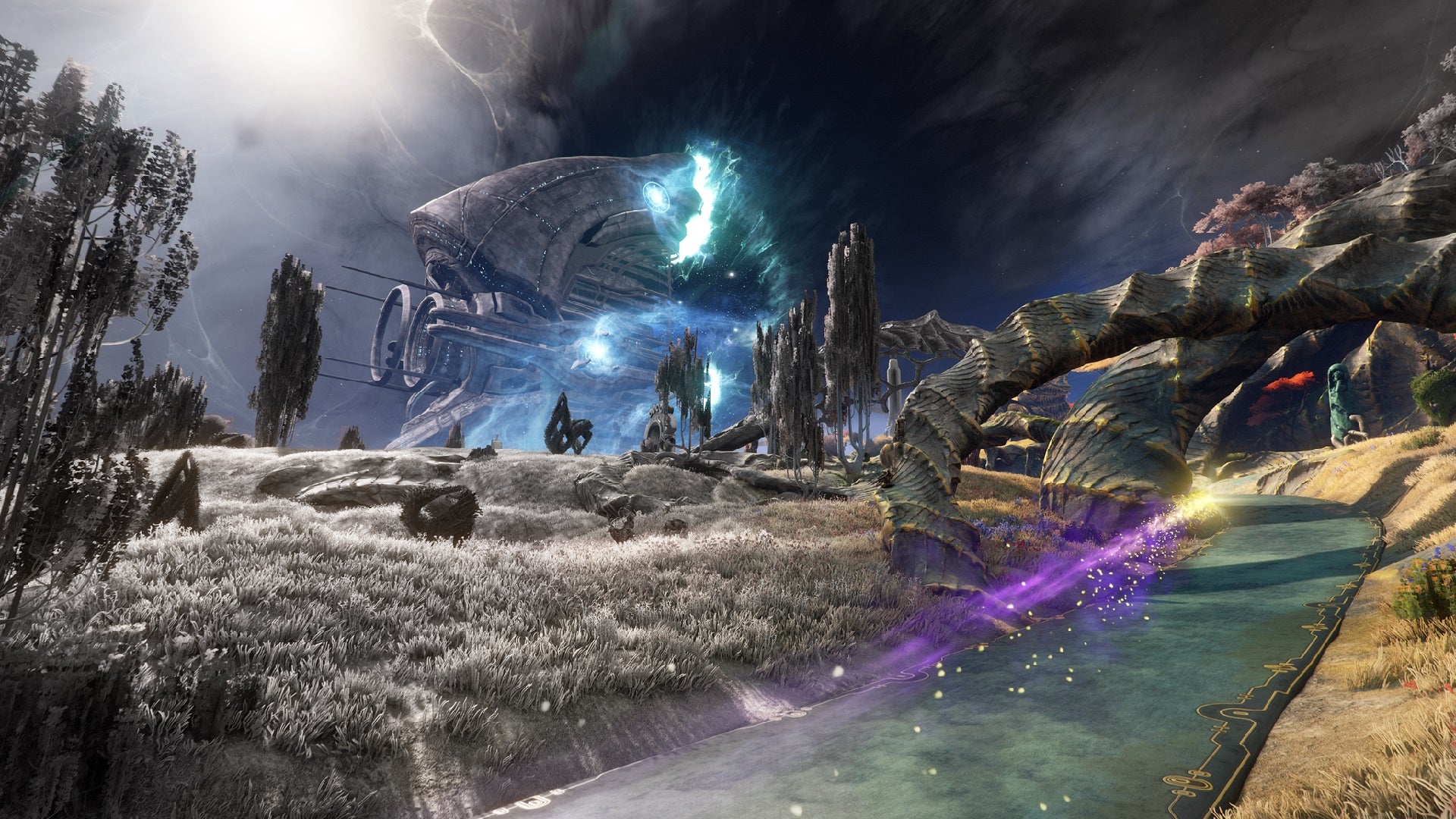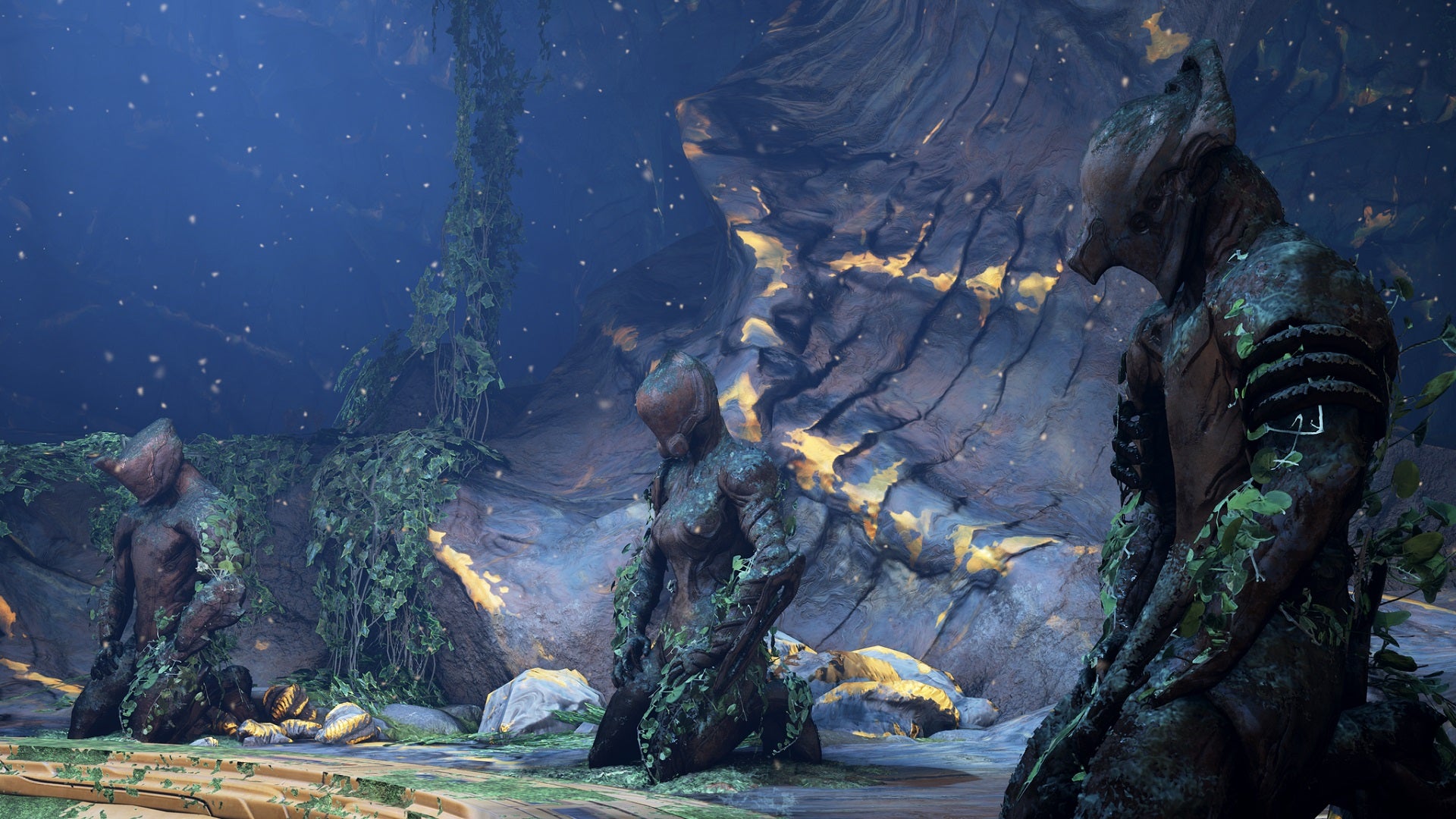Shortly prior to TennoCon, we sat down with new creative director on Warframe, Rebecca Ford, to talk us through some of the design decisions for The Duviri Paradox, including the black and white aesthetic, the decision to take on the Roguelike genre, and what the daily experience will actually be like for players
You’ve established that the Duviri Paradox is set in a new open world zone, but it seems like there’s a vastly different relationship with the actual citizens in this new zone. That there’s not this one hub where all the vendors can be found. Is this the case?
Ford: There is not! They are dispersed throughout the world instead. What we’ve done is we’ve taken everything that makes our other open worlds function, and we kind of flipped it on its head to give a very different experience. So, one day the Duviri version of Konzu (referring to a main NPC tied to the Cetus open world zone) is not always going to be in the same spot. You’re never going to be inconvenienced by this, but you are going to find yourself playing through a very emotion-centric series of activities.
One day the king could be angry and the equivalent of Konzu you might be hiding. You’ll start near him and then you’ll find him and then your day will kick off with your squad mates, but then another day the king could be really happy, and you’ll find our Konzu character in the centre of town officiating a wedding! It’s a very, very, very weird, strange, void narrative. It’s like we’re trying to build an experience around a day that is realistically resetting based on the king’s will, while also trying to avoid just doing just another town and open world.
I should mention, we are also avoiding a syndicate for this round. We’re taking something else that we think works for progression and using it in this open world. So, we’re borrowing from other parts of the game to create a completely different experience. Maybe, we’ll realize we got to have one. But at this point, there’s not?
Can you elaborate on how it’s different? Or is that just a mystery for now?
Ford: Honestly, we have a progression system that we think will lend itself better to the reset experience that we’re going for, rather than a syndicate.
Can you talk me through, like, what the daily experience actually entails? And is it a daily run, like you’d see like a traditional Roguelike?
Ford: Yeah, it is. We really know our community and what they either treasure or don’t. If we use a Sortie (end-game activity that changes on a daily basis) as an example, a lot of people just go in because they want to roll the drop table at the end. If you can imagine a world where our Sorties had a little bit more of an open world flair with side activities that could distract you. We’re kind of building an experience where there is a daily quest, and a player can go in and just do the quest to get their progression. Or they can go in and do the quest plus side activities.
Then we’re hoping that those players will get bucketed together, so that the ones that are just interested in the rewards and those types of things will just do that. Then the ones that really want to be out in the open world they want to - not literally, we’re not mining - but if they wanted to mine, they would get matchmade with people that want those to the same so that they can really have that more long-term experience out there.
How would you determine what players want to do before they go in and do it?
Ford:They pick! They can choose between just the story or story and activities. So we’re going to try and make sure that there’s no friction there.
Why a Roguelike? What made you want to take a swing and that sort of thing?
Ford: We had the idea that the Duviri world resets very early on. That something is happening there, that the Drifter got old, the world is weird. The idea of a reset and a king that is in control of everything really lent itself to exploring the Roguelike idea as a potential avenue.
Then when we really needed to start committing to everything, we had this team transition behind the scenes, and I really felt, alongside Pablo on the design side as well as many members of the team, that if we could give players the ability to pick their builds from all the stuff they have, and everything that we have in the game as part of like a very contained Duviri experience, it’s going to work. That’s because there are so many upgrades in Warframe, and when you’re playing core Warframe, you get to pick what you want all the time.
As you progress, you’re going to make meaningful, permanent flexibility in your build. It’s not like you’re just going to get handed one random thing every day, you’re going to be able to really dive into specializing and picking out what frames will appear for you for this day, we’ll give you angles there to engage with. We really thought that if we reset this world every day, and we have all this stuff to pick from, wouldn’t it be interesting if players had to pick it as they went on a day-by-day basis? What are you going to pick? What are you going to get? Your Drifter and Warframe story for that day can be completely different.
Moving away from gameplay to visuals. Where did the idea for the colour – or lack thereof – come from?
Ford: We felt that the villain Dominus Thrax - he has absolute control. For us, being in black and white represents a very visual artistic choice, but it’s also thematically where we want the starting point for the Drifter to be. Frankly, he’s stuck. He’s in someone else’s dream, someone else’s world. There’s nothing he feels he can do and a really strong metaphor for people finding joy and overcoming the sense of apathy is going from black and white to colour. There’s going to be a through line there for a very human experience I think a lot of us have had with the use of colour.
We’re actually going to very unexpected places with colour, the art team and the tech team have built an insane amount of asset libraries. When the King is in a happy mood, the world is going to look different, you’re not going to get those red trees. We have purple trees! Each mood - you can imagine anywhere between four to six, although we’re still nailing down the final number - versions of the world depending on the King’s mood. You’ll be able to play through them and see some pretty wild stuff.
With this update, we’re going through the portal into the void and a whole separate different sort of plane. Was it freeing to kind of escape the galaxy to kind of make something that isn’t rooted in like the planets we know?
Ford: Yes, it was. The hardest part of this update has been making sure it’s still sci-fi at its core. So, there’s a lot of weird things that will feel more alien than fantasy. We have such distinct things in this open world. There are infinite waterfalls, which you can’t do on a planet really. So it’s vastly different.
Do you think there will be a trend moving forward kind of branching outside of our galaxy to more exotic locations outside of the know Warframe galaxy?
Ford: Kinda. The future is starting to be extremely planned out for where we’re going from here. That’s a next year interview question! But we have two destinations we must get to in order to continue the Warframe story, and I won’t talk about what they’re going to look like or what they are, but we know where we’re going next.
If you’re interested in additional coverage around TennoCon 2022, we’ve got another interview feature on the Veilbreaker update announced during the show, as well as a piece on Soulframe and Digital Extreme’s steps into publishing with Airship Syndicate.



